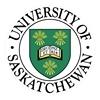Explore all the information on
Poultry lighting
Light is an essential aspect of poultry production. In most housing systems, artificial light is utilized to maximize production in pullets, layers and breeders. Today, a variety of different bulbs are available to illuminate the inside of a poultry house, all of which have benefits and shortcomings. Understanding the different lighting options available for poultry, as well as the terminology and management of light, is essential to achieve the best production. Light is critical for egg production and pullet growth. Domestic poultry see and respond to a different range of light color spectrum and have different spectral intensity responses than humans. While humans respond to light from around 400–750 nm, chickens can see UV-A light (315–400 nm) in addition to 400–750 nm. Additionally, the magnitude of sensitivity for red and blue spectra is much higher for chickens with additional peaks of light sensitivity around 480 nm and 630 nm.
Laying hens are female chickens raised for egg production. The egg production system in the US is currently undergoing a transition from conventional cages to cage-free housing systems. The number of cage-free housing has increased from 4% hens in 2004 to 28% at the end of 2020 (USDA-NASS, 2021). Cage-free systems provide space...
Comments : 0
Recommendations: 0
by Sam Shafer
Poultry scientists find hens prefer lower UVA/B light
A new Poultry Science ® study suggests hens do like sunlight—just not too much. In fact, by monitoring hen behavior under different strengths of UVA and UVB light, the researchers found that hens prefer to spend more time in lower levels...
Comments : 0
Recommendations: 1
by Sam Shafer
Switching from blue to red light in laying operations may benefit birds, but there are caveats
According to new research in The Journal of Applied Poultry Research , hens can benefit from both blue and red light—if these lights are provided at specific points in production. The study, led by scientists at Mississippi,...
Comments : 0
Recommendations: 0
Why do we, for the most part, give our chicks 24 hours of light during brooding? Do chicks actually benefit from being able to eat and drink at 2 am? Though it is widely believed that 24 hours of light is essential to maximizing chick performance and health, preliminary trails have found no significant benefit in doing so. Numerous...
Comments : 26
Recommendations: 7
.jpg&w=3840&q=75)

Srinivasa Farms and Hy-Line: Pioneering Growth in India’s Poultry Market
Suggested link
INTRODUCTION Brazilian poultry industry is highly relevant for the country economy. In 2016 a total of 13 million tons of broiler meat was produced, and nearly 35% was exported. (ABPA, 2017). Broiler production is carried out in several variations of house design. However, most of the production in the integrated system is done in open-sided houses with lateral polypropylene curtains, and with solar orientation East-West. The inside cooling is a combination of natural and forced...
Comments : 0
Recommendations: 0
High pressure sodium (HPS) lights have been used in broiler-breeder houses for decades due to their very high lumen output. The typical 150-watt HPS fixture produces approximately 16,000 lumens of light which is 16 times the amount of light produced by a 75-watt incandescent light bulb. The downside of HPS lighting systems is that in order to...
Comments : 0
Recommendations: 0
INTRODUCTION Broilers and turkeys are traditionally kept under monotonous environmental conditions, which compromise bird welfare due to inactivity, restriction of the behavioural repertoire and various health hazards. Recent development of welfare labels request enrichment devices in order to stimulate the expression of a wide spectrum of behaviours and to improve the physical and psychic conditions of the birds. Consequently there has been a rapid development of studies...
Comments : 0
Recommendations: 0
Introduction Recommendations for lighting programs during the rearing period for broilers generally include a dark period. In Canada, the Codes of Practice for Chickens, Turkeys and Breeders (https://www.nfacc.ca/pdfs/codes/poultry_code_EN.pdf) require that a minimum of 4 hours of continuous dark is included in a photoperiod program from day 5 of placement to no sooner than 7 days prior to catching. However, this remains a controversial subject, and the inclusion of darkness is...
Comments : 0
Recommendations: 0
INTRODUCTION Avian embryogenesis is a perfect platform to examine the effects of exogenous factors on embryonic development due to the physiological independence from the hen (Hill et al., 2004). During incubation, the management of cabinet temperature, humidity, egg turning and air composition are critical to achieving successful artificial incubation. Light is an important exogenous factor for controlling many physiological and behavioral processes in animals but the use of...
Comments : 0
Recommendations: 0
by Sam Shafer
Looking for a golden goose? Try a goose that’s two years old. In a recent study, researchers with the Heilongjiang Academy of Agricultural Sciences found that goose egg yolks (the most valuable part of the egg) tend to be at their largest following the goose’s second laying season.
The Journal of Applied Poultry Research study links a...
Comments : 0
Recommendations: 0


Recent publications demonstrate arginine sparing potential of guanidinoacetic acid
Suggested link
Light plays an important role in controlling the age at sexual maturity in birds; attaining sexual maturity at an appropriate age and weight is the key to reproductive success and the present study was an effort in the same direction. To develop specific practice for quail production and to optimize the best age for photo-stimulation present experiment was conducted. In total 225 females and 75 males of 5 week old were studied. A completely randomized design with three treatment of 5...
Comments : 1
Recommendations: 1
Tom Tabler, Extension Professor at Mississippi State University, shared advice on management practices, composting, lighting and water quality, during IPPE 2017 in Atlanta, USA....
Comments : 24
Recommendations: 6
Leg problems are among the top health concerns of poultry raised for meat. Leg problems influence poultry at all stages of production, lead to reduced productivity and contribute to mortality. Leg problems have many different causes and contributing factors, including...
Comments : 1
Recommendations: 0
Providing an optimal light program during pullet rearing and breeder production starts with understanding how chickens are stimulated by light. Light intensity, light coloring and day length all play a major role in preventing or stimulating sexual maturation. Ideal day length for rearing pullets is 8 hours to prevent early sexual development and therefore assure that flocks begin lay and maintain egg production in a more uniform manner....
Comments : 7
Recommendations: 0
Avian species rely heavily on vision to provide them with necessary information about their surroundings. Chickens rely on their sense of vision to recognize: Other chickens. Predators. Another chicken's intentions (which allows birds to avoid unwanted aggression). Location of...
Comments : 4
Recommendations: 3
INTRODUCTION Genetic selection programs emphasizing broiler growth, breast muscle deposition, and feed efficiency traits over the past 30 yr have led to a rate of change that has not slowed (Havenstein et al., 2003a,b). Photostimulation ( PS ) age, feed allocation, and BW profile of the maturing pullet can all effect nutrient partitioning between growth and ovary development (Robinson et al., 2007). Renema et al. (2007b) reported that, as a percentage of BW, Ross 708...
Comments : 0
Recommendations: 0
INTRODUCTION Despite superior color vision, hue discrimination, and motion detection, broiler chickens are typically kept in lighting conditions deemed suitable for humans. Environments tailored to poultry vision could lead to improvements in bird health, welfare, and performance by supporting the development of normal vision and in male broilers (Edwards, 2003). UVB exposure also improved bone mineral density, egg production, and levels of vitamin...
Comments : 0
Recommendations: 0
A grow light is the artificial light provided to the livestock for their growth and development. It is used to modify the physiological & biological responses of an animal with respect to feeding habits, reproduction, and milk production.
Livestock grow light technology is a known technology; it has wide usage in livestock farms. The use of smart technology in livestock farms is expected to witness robust growth and adoption during the forecast period, owing to the increase in...
Comments : 0
Recommendations: 0
KEY POINTS Birds ‘reproductive cycle is controlled by changes in day length called as Photoperiod. Birds perceive this photoperiod in two ways: a) Through retinal of the eye to visual cortex and pituitary gland b) Through harderian gland (UVA specific light) which triggers reproductive system Birds are not “stimulated” by the entire period of light, but rather by two important parts of this period. Birds are...
Comments : 22
Recommendations: 9
Introduction
Despite domestication and intensive genetic selection, commercial poultry retain the need to perform their natural behaviours. Conventional broiler housing often provides little opportunity for a good range of natural behaviours, while conventional layer cages severely restrict normal movement and behaviour. Damaging behaviours have been shown to increase in chickens when they are deprived of...
Comments : 0
Recommendations: 0


















.jpg&w=3840&q=75)











